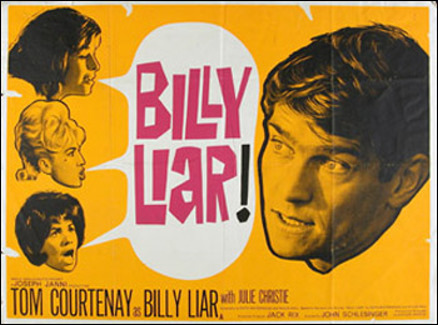
The film East is East (1999) is iconic in our household because it sums up a particular era for my family. Its gritty, claustrophobic, working class, fish and chips scented realism acts as a reminder of my parents’ early days as migrants in 1960s Bradford. Of course, the scene where George Khan’s family travel from Salford all the way to Bradford, just to watch a Bollywood film, is particularly dear to us. The gesture recognises, if nothing else, that Bradford was the entertainment capital of the North, at least for Asians like us!
I read an interview with the film’s writer, Ayub Khan Din, which explained that the inspiration for the look of East is East came from several Northern films of the 1960s – films like A Taste of Honey (1961), Spring and Port Wine (1969) and This Sporting Life (1963). These films might have been British classics but I’d never heard of them, but then, I grew up on an almost exclusive diet of Indian films or wholesome family viewing such as George and Mildred. What intrigued me most about the films that Ayub Khan Din mentioned was that they were all set not a million miles away from Bradford – in Bolton, Salford and Wakefield respectively.
I’m well used to seeing London landmarks such as Big Ben and The Embankment on old British films during midweek matinees on Channel Five, but these aren’t a patch on what the North has to offer, are they. It reminds me of Rudyard Kipling’s Ballad of East and West , “Oh, East is East, and West is West, and never the twain shall meet”. Nobody wants to wash in a tin bath in the lounge anymore, yet there’s something quite nostalgic about seeing a familiar backdrop in black and white – row upon row of cramped terraces, a bus on its way down the hill into town, smoke billowing from the tall factory chimneys, and even the unmistakeable dreary weather.
And so, with guidance from my Twitter friends, I’ve been getting grounded in gritty Northern dramas. It’s a bit like being a home tourist ‘oop North’. There’s such a thrill in seeing something captured on celluloid that‘s close to home, or familiar in some way. That’s why I’d watched Billy Liar (1963) many years earlier when I first learnt that it was partly shot in Bradford. And after watching the film, I diligently walked into town and stood at the foot of the Queen Victoria statue (outside the Alhambra Theatre) which is immortalised in the film. I’m sure it was also thanks to Billy Liar that I discovered Undercliffe Cemetery!
I’ve still got some catching up to do and the recommendations are still coming in. I’ve just watched Look Back in Anger (1958) which was partly set in Derby, and Saturday Night and Sunday Morning (1960) the exteriors of which were shot in Nottingham. Next on the list is Kes (1969), filmed in Barnsley. But my favourite film so far has to be Hobson’s Choice (1954), a superb story of feminism in 19th century Salford. The film is simply crying out to be remade by Bollywood, with Madhuri and Shahrukh Khan in the roles of Maggie and Willie Mossop.
@irnaqureshi blogs about being British, Pakistani, Muslim and female in Bradford, against a backdrop of classic Indian films at www.bollywoodinbritain.wordpress.com
On a similar theme, I am sure you would really appreciate the amazing pictures from Daniel Meadows, currently exhibiting at the National Media Museum.
hi there, I also have been making my way through the kitchen sink dramas of the sixties thanks to a recent LoveFilm subscription. ‘Saturday Night, Sunday Morning’ has to be my favourite, I just love Albert Finney’s smile, he’s so cheeky and mischievous! ‘This Sporting Life’ was pretty intense, the main characters brilliantly played by Richard Harris and Rachel Roberts, the rugby scenes were pretty brutal too. ‘Kes’ has always been a favourite, the bit with Brian Glover playing football is a classic, and the heartbreaking ending never fails to get me. Loved Tom Courtney in ‘Billy Liar’ and ‘The Loneliness of the Long-Distance Runner’, he is such a versatile actor with a wonderfully expressive face. ‘A Taste of Honey’ was pure genius, raised so many social issues and quite a brave film in its day – Rita Tushingham and her mum were both hilarious characters with amazing on screen presence. I’ve got ‘Spring and Port Wine’ to watch next, it’s set in Bolton where I’m from originally so I’m looking forward to that.
Sorry for the brevity and facile nature of this post, just wanted to encourage you in watching these films as they have so many talented artists, writers and producers involved and are a must for everyone that enjoys cinema and story telling. I’d also recommend Ken Loach’s ‘Poor Cow’ and ‘Cathy Come Home’ in the same social realism mold, and ‘A Kind of Loving’ and ‘Room at the Top’ – both of which I haven’t seen yet but which are highly rated. Enjoy!